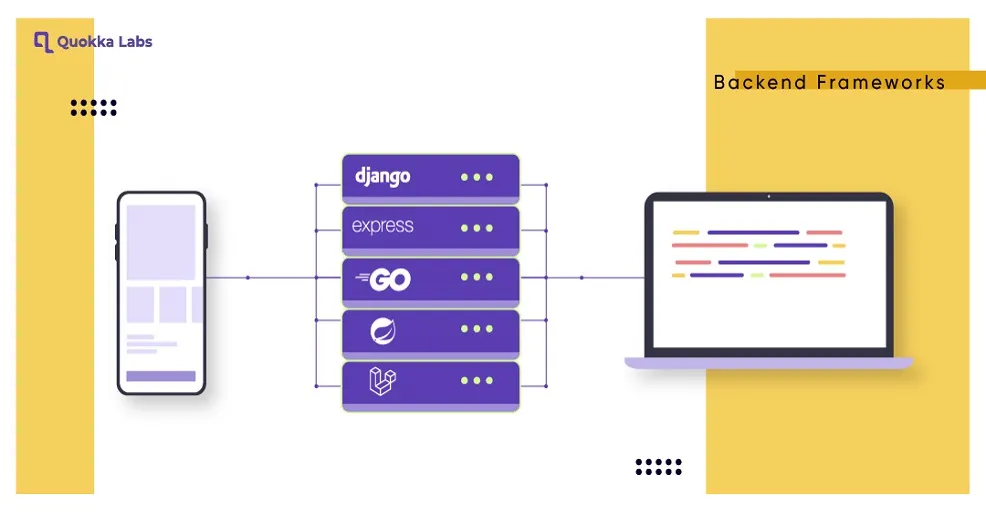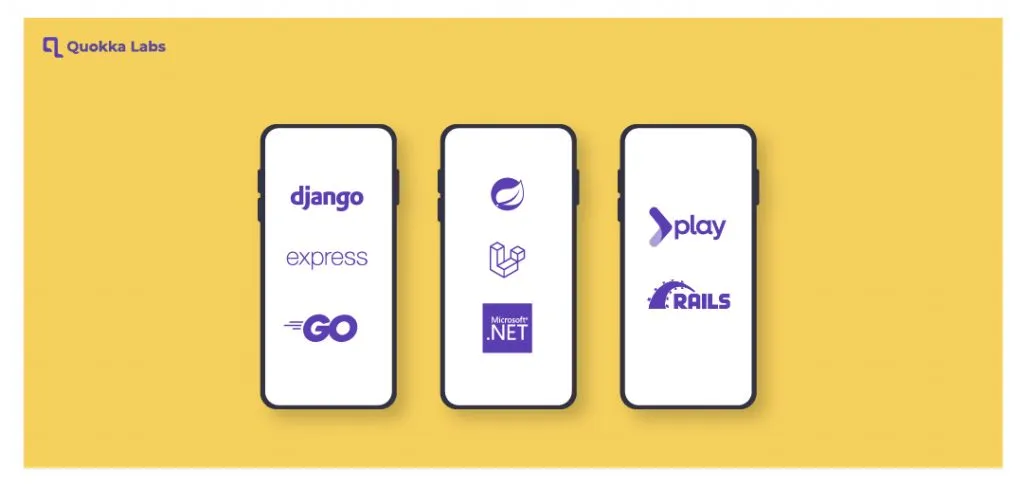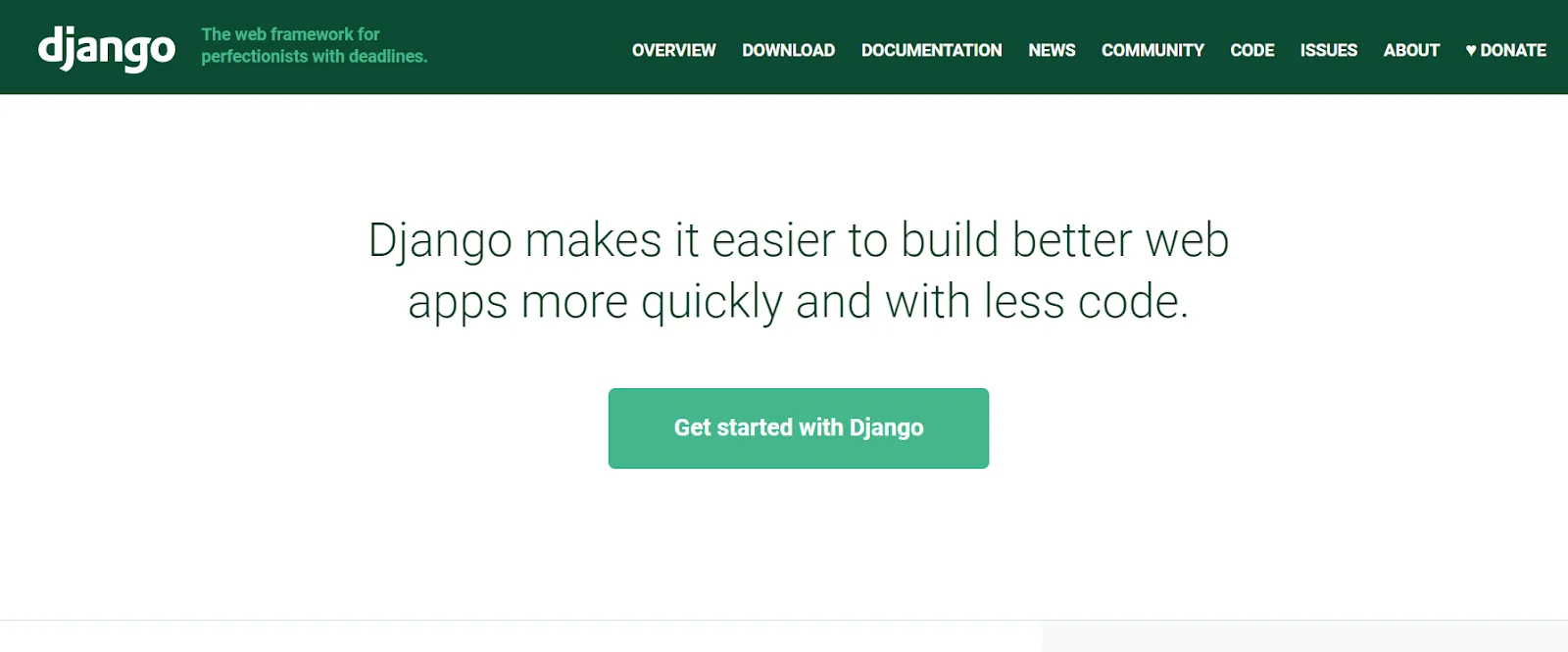Technology


1 min


Explore the dynamic impact of Backend Frameworks on Mobile App and Web Development in our latest blog. Discover the key differences between Frontend and Backend Development, unravel the role of Backend Developers, and delve into the features of the top 8+ Backend Frameworks for 2024. Optimize your app's efficiency and functionality with insights into Backend Frameworks for Mobile App Development and Web Apps. Stay ahead in app development – read more now!

By Digvijay Singh Tomar
03 Oct, 2022
The rise of smartphones has driven businesses to invest in websites, web apps, and mobile apps. With billions of mobile users, a robust online presence is crucial. The quality of websites and mobile apps can impact revenue, making the choice of backend frameworks for mobile apps and Backend Frameworks for Web apps vital. Frameworks, known for creating rich and interactive applications, play a key role in server-side development for web and mobile apps.
In this blog, we will explore the significant impact of backend frameworks for mobile app development services and web app development on projects. We will find out the popularity of various backend development frameworks as we dive into their influence on web and mobile app projects. Key things to observe in this blog:
From the developers' perspective, the front end uses code to make mobile apps look pretty, whereas the back end involves writing codes to make the app work. When it comes to choosing the right tools for backend frameworks for mobile apps or backend frameworks for web apps, developers face crucial decisions that impact their applications' overall performance and functionality.
But there are a few things you need to know about both the app development processes. First, users install applications on a smartphone from the Play Store or App Store, which are frontend apps - Instagram, Facebook, or even a simple Calculator.
Each mobile app on your mobile phone is a front-end application. How is that possible? It's possible since frontend apps allow users to connect through buttons, flips, etc. Because they work on smartphones, they are mobile apps, too. Understanding the intricacies of backend frameworks for mobile app development is essential for developers to ensure seamless communication between the front end and the server, optimizing the overall user experience.
Well! A front-end developer translates the app's design into a code to display correctly on the web browser. Frontend developers are in high demand because of the introduction of responsive web design.
The front-end developer needs to ensure the design supports all the latest browsers and mobile platforms and that the web design is compatible with computer resolutions and the browser's widths.
On the other hand, the backend development, in layman's language, involves an extra app (a piece of software that runs on servers) for your mobile app. Backend development powers the working of the main application.
Entities' backend development involves:
Note: To access the backend of an app, you need the internet and an Application Programming Interface (API).
A backend developer develops the required logic that ensures everything works properly. The backend developer is also responsible for creating the mobile app server connecting the website or mobile app's content to the CMS (Content Management System).
As a web or mobile app designer, a backend developer converts the design and frontend development process into the CMS setup. It gives the clients a human-centric way to handle the app's content. If the mobile app backend architecture is simple, the clients may not have any control.
Now that you know how frontend and app-backend frameworks differ, let's learn what an app development framework is and what features make them developers' favourites.
An app development framework is a software tool that facilitates and supports the development of other software applications like web resources, services, web APIs, and mobile apps.
Such app development frameworks offer specific ways to form and install software applications on the World Wide Web (WWW), PlayStore, or the App Store.
With the help of libraries, frameworks mechanize the linked general activities to develop an app.
For instance, frameworks consist of libraries for templating, database access, and management of different sessions. They also frequently endorse the reuse of the written code.
Frameworks render the app for the desired platform using the developer's code and pre-built components like compilers, coding interfaces, debuggers, toolsets, etc.
There are two primary web app development frameworks - server-side and client-side.
Such a web app development framework helps create landing, simple pages, and forms of different kinds. They also help render output data while enhancing security to save an organization from web attacks.
These web development frameworks can easily enhance and execute a new user interface (UI). Client-side app development frameworks only deal with what happens inside a web browser and have nothing to do with the business logic.
Client-side frontend development frameworks are famous for fabricating various animated characteristics and single-page applications (SPAs). Different client-side frameworks work differently in terms of their usage and functions.
Get more knowledge on web application development from here.
 Worldwide human behavior triggered by the explosion in technology innovations has made it imperative to have a mobile or online presence for a business's survival.
Worldwide human behavior triggered by the explosion in technology innovations has made it imperative to have a mobile or online presence for a business's survival.
It's now essential to be a mobile-first company before the world. Only then can businesses capture the imagination of the ever-increasing mobile society.
However, merely building and launching a product into the mobile app market will not break the ice, so to succeed in a highly competitive mobile and web app development market, you need
Furthermore, if we talk about aesthetics and functionalities in an app, backend frameworks for mobile apps play a crucial role in ensuring a seamless experience. Native apps offer an unmatched experience. The only thing that makes investors nervous is that native apps cost too much to build and maintain. And it's challenging to penetrate users with native apps.
Learn more about How to Develop Mobile Applications.
The solution is to develop a web or progressive web app, hybrid or cross-platform mobile app if you're on a low budget. By leveraging backend frameworks for web apps or Backend Frameworks for Mobile App Development, developers can optimize the cost-effectiveness and efficiency of their applications. It's possible by leveraging mobile app development frameworks.
Day by day, the increasing demand for Mobile app backend frameworks and Web app backend frameworks backend is becoming an undeniable part of the daily corporate routine. Depending upon database flexibility & and other admin-based customizations, these high-level frameworks can simplify backend operations.
(1.) Django
 Written primarily for Python Developers, the DRY (DON'T REPEAT YOURSELF) principal Django supports won't let you reuse existing code modules at any cost.
Written primarily for Python Developers, the DRY (DON'T REPEAT YOURSELF) principal Django supports won't let you reuse existing code modules at any cost.
Use its backend customizations & scalable programs to create mobile/ website applications that can cater to many client requests at a high speed of development.
Its excellent REST API support allows different content management systems to integrate, automate, and improve tasks of variable complexity. A few features of Django are
(2.) ExpressJS
The popularity of ExpressJS JavaScript framework is gaining momentum across every sphere worldwide. Being an unopinionated part of the MEAN & MERN stack, use its hybrid app development flexibility for all user requests.
Make your business expressive with the POST, GET, DELETE, & PUT requests this JS framework handles at higher flexibility.
Take a look at the features/ functionalities this assertive framework intuitively entertains.
(3.) ASP. Net
Its modularized framework comprises API services whose micro-versions know very well about backend development. Learn to minimize fault tolerance at any cost.
Even the active server pages of this advanced open-source framework run smoothly on Linux, MacintoshOS, & Windows.
Build best-performing backend mobile & web versions of an application with ASP. Net's real-time functionalities mentioned beneath
(4.) Flask
Better call it a BEGINNER-FRIENDLY framework for all your Python code dependencies. With its RESTful request dispatching, map upload, and amplifying every object relation at secure cookies.
Acclaimed organizations like LinkedIn, Pinterest, Uber, & Mozilla use Flask for creating large-scale & small-scale website applications.
These are strengths that lie within the customizable framework of Flutter.
(5.) Fiber
Designed to ease things for Golang professionals, such a lean & integrative framework minimizes backend overheads.
Manipulate and verify technical particularities of rapid backend programming with the low memory footprint of Fiber.
Backed by routing like that of the Express JavaScript framework, a few of its functionalities improve productivity at higher accuracy,
(6.) Spring Boot
Also known in the market as Spring MVC, it offers many practical ways for backend developers to quickly escape from lazy initialization.
Besides, the production-ready environment Spring Boot uses for creating & maintaining standalone applications focuses more on annotation.
These are some reasons that clarify Spring Boot helps eliminate backend complexities:
(7.) Laravel
It is an absolute and scalable server-side framework well-versed in every in-and-out data manipulation, which iteratively rules out unprofessional app research semantics.
Spotify, X(Formerly Twitter), & Udemy are using Laravel as their backend framework and heading towards excellence with its elegant & expressive syntax.
Let's get quickly started with learning about Laravel features in short: -
(8.) **Ruby on Rails
A bug-free server-side framework written in Ruby whose coding conventions make it debatable when developers customize its libraries to solve real-time database management problems.
Moreover, the MVC architectural pattern it adheres to mechanizes SEO friendliness of URLs for retrieving development resources better.
Solve any of the mobile or web application development challenges better with the below-mentioned merits of Ruby on Rails: -
(9.) Play
It is one of the most potent & easy-to-configure backend web frameworks developers recommend for most business ventures.
Moreover, its configuration templates ensure better performance, easing developers' workload.
Feel less stressed and, at the same time, highly efficient with the programming capabilities Play possesses: -
Backend frameworks have empowered countless leading businesses to ensure optimal app development performance & web scalability. Backend frameworks for mobile app development are a hot, debatable topic of discussion due to various advantages & disadvantages; hosting, creating, developing, or deploying a testable backend application emerges differently with time.
To streamline business processes, leverage user-friendly coding conventions in backend frameworks for mobile apps like Ruby on Rails, Fiber, Play, SpringBoot, etc. Ensure cost and time savings align with market needs. Let the responsiveness of these backend frameworks for web apps ensure comprehensive SDLC support, fostering business success across diverse market standards.
Ready to elevate your app development experience?
Contact our web and mobile app development experts to discover the perfect solution tailored to your needs. Don't miss out on the opportunities – take the next step and contact us today!
What Is an API? A Developer's Guide to Application Integration in 2025
By Dhruv Joshi
5 min read
What Is a Push Notification and Why It Matters for Your App Strategy
By Dhruv Joshi
5 min read
Top React Native Development Companies to Build Scalable Apps
By Dhruv Joshi
5 min read
How Wearable Technology Is Driving Real-Time Data Experiences in Mobile Apps
By Sannidhya Sharma
5 min read

Technology


5 min
What is an API? Learn the real meaning of Application Programming Interfaces in 2025, how APIs work, why they're essential to software development, and how to integrate them. This developer-focused guide breaks down API types, use cases, benefits, and best practices for business success.


Technology


5 min
Wearable technology is reshaping mobile apps with real-time insights, enabling smart alerts, fitness coaching, health monitoring, and more. From smart rings to AR glasses, explore how these evolving devices are creating seamless, personalized experiences across various industries and everyday life.


Technology


5 min
Augmented reality in retail helps brands drive sales and reduce returns by transforming how customers discover, try, and buy products. This blog is your guide to using AR strategically, from choosing the right use cases to launching cost-effective AR experiences that delight customers and differentiate your brand.


Feeling lost!! Book a slot and get answers to all your industry-relevant doubts